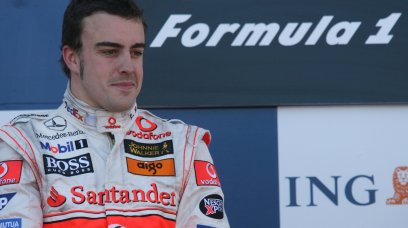George Russell's suggestion to bring back active suspension as a cure for the porpoising phenomenon seen during F1 testing would lead to more issues, according to RacingNews365.com technical analyst Paolo Filisetti. Russell has expressed safety concerns over the level of porpoising seen in the Barcelona pre-season session and argued that the return of technology last seen in the early 1990s could help to alleviate the issue. "I guess if active suspension was there that could be solved with the click of your fingers," Russell told media, including RacingNews365.com , at last week's test. "The cars would naturally be a hell of a lot faster if we had that and I'm sure all the teams are capable of that. That could be one for the future. "But let's see [at the next test] in Bahrain. I'm sure the teams will come up with some smart ideas around this issue." He continued: "I think it's clear if we had active suspension, the cars would be a hell of a lot faster for the same aerodynamic surfaces, because you'd be able to optimise the ride heights for every corner speed, and optimise it down the straight for the least amount of drag. "That's an easy way to make the cars go faster, and if you're thinking of a safety aspect, then potentially... I'm sure there are more limitations, I'm not an engineer, but we wouldn't have this issue down the straight, that's for sure."
Insight: RacingNews365.com technical analyst Paolo Filisetti
In response to Russell's comments, RacingNews365.com 's Paolo Filisetti explains why the return of active suspension is not feasible on several levels. Russell correctly said that if active suspension were to be allowed again, it would be an effective (albeit not complete) solution to porpoising. With active suspension, you have an endless, or infinite rate of movement with the suspension, allowing for real-time adjustments. This would prevent the phenomenon of jumping, falling, jumping, falling. Aside from solving the porpoising problem, active suspension would significantly increase the aerodynamic efficiency of the car, because with active suspension, you would maintain a perfect ride height across the car. But it's not just about implementing an Electronic Control Unit that manages the suspension and hydraulics. You would have to cope with the aerodynamic demands and so on, and that would also increase the costs quite substantially.
How active suspension would be different in modern-day F1
To produce active suspension today, it's not a matter of producing the kind of active suspension seen in 1992, some 30 years ago, when the electronics were much less sophisticated than today. We are now in a budget cap era, but even without the budget cap, active suspension would be such a powerful tool to improve the overall performance of the car that everything would go beyond our imagination. The performance of the car would increase very significantly. The cars would be so fast in the fast corners, we wouldn't be able to imagine it. We would also have to find solutions for the safety of the cars, the safety of the circuits and so on. If F1 introduced such a tool again, which is really powerful, the top teams would try to exploit the potential of it, and this would open the gap, not close the gap, between them and the midfield teams – going in the opposite direction that the new rules intended. In my opinion, there are more cons than pros to such a move.
Most read









